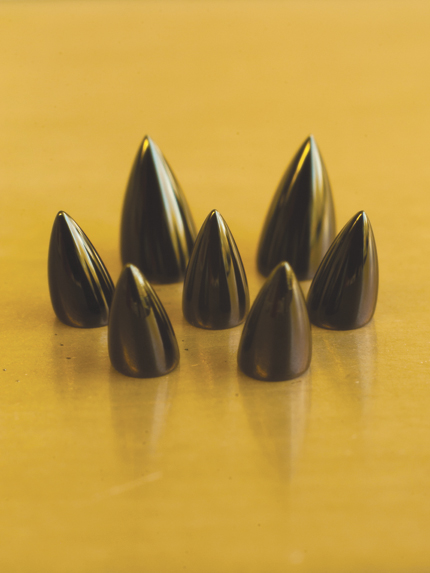A model system for dynamic self-assembly
DOI: 10.1063/PT.3.2094
Self-assembly into ordered, energy-minimizing configurations underlies crystallization, block-copolymer microphase separation, and protein folding, and is being pursued for bottom-up fabrication of nanostructures. But many systems, most notably in biology, are not in equilibrium; instead, they organize themselves in a dissipative state that’s sustained through a continuous supply of energy. Such dynamic systems have proven challenging to understand and engineer. But researchers at Finland’s Aalto University and at ESPCI in Paris have now presented a model system for visualizing and studying self-assembly and complexity over a broad range of conditions.
The system consists of droplets of magnetic ferrofluid on a superhydrophobic surface. The extremely low friction frees the droplets to respond to an external magnetic field. To create this seven-droplet arrangement, for example, the researchers place a single 20-µL drop of ferrofluid on the surface and slowly raise a cylindrical magnet under the substrate. As the fluid experiences increasingly stronger fields and larger field gradients, daughter droplets spawn one at a time as parent droplets become unstable and divide. The droplets rapidly re-equilibrate their positions after each division; here their spacing is about 3mm.
The droplets are in a so-called kinetic trap: If the field were removed they would not recombine, because they lack the kinetic energy to overcome their magnetic repulsion. But when the researchers oscillate the magnet horizontally beneath the surface, the time-varying field drives the droplets to adopt complex, dynamic patterns, including coalescence into larger, elongated droplets. When the oscillations stop, the droplets quickly return to their equilibrium static patterns. (J. V. I. Timonen et al., Science 341, 253, 2013, doi:10.1126/science.1233775
To submit candidate images for Back Scatter, visit http://contact.physicstoday.org

Image courtesy of Jaakko Timonen.

